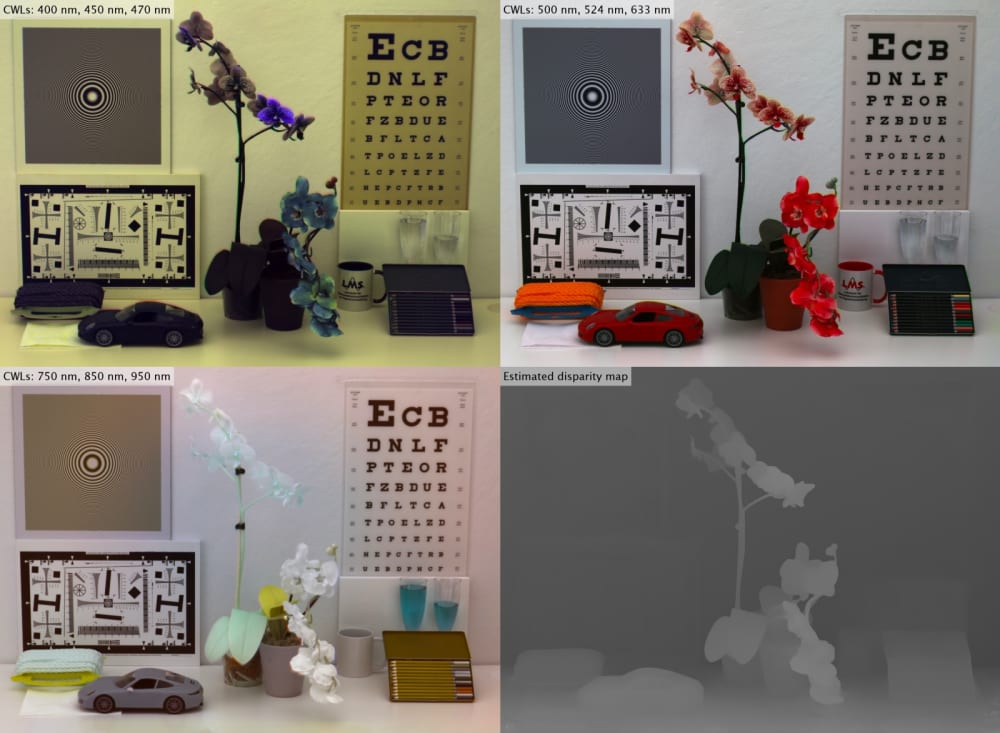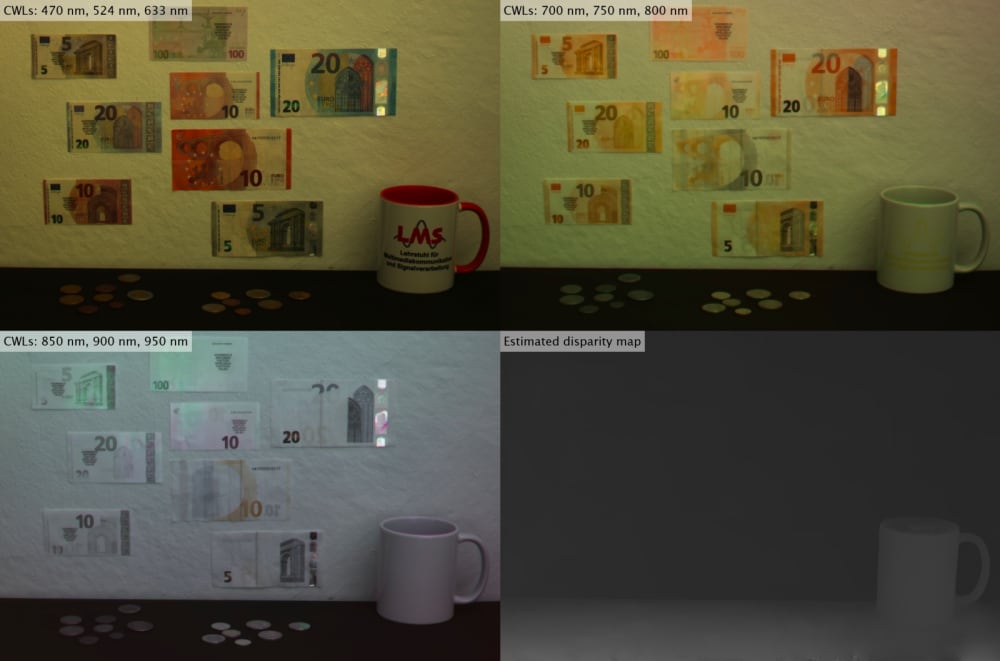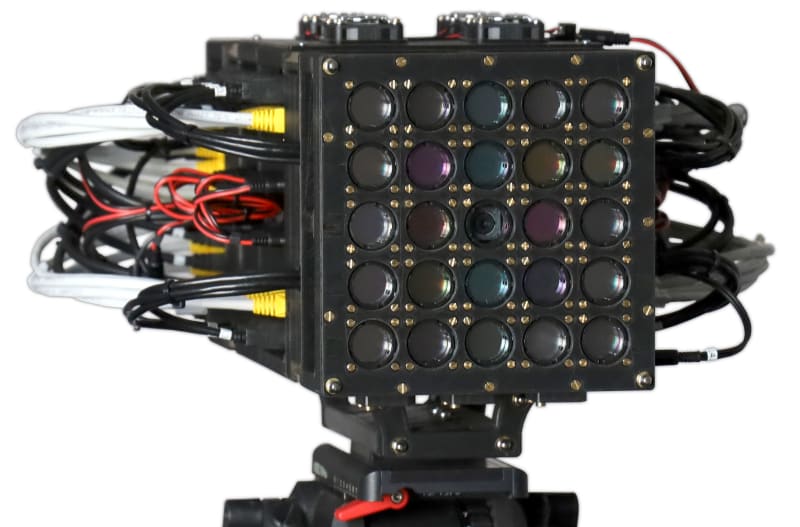
Light spectra are a very important source of information for manifold applications as, e.g., diverse classification problems for materials discrimination. Aside from this, agricultural and medical applications also came up, which measure the health condition of plants and humans. Despite the growing demand, the acquisition of multi-spectral images is presently complicated and expensive. Often, highly tailored, expensive, inflexible, or low resolution acquisition setups are only obtainable for specific professional applications. Furthermore, the acquisition of multi-spectral video data is not possible for most of the existing systems, or at least can be achieved only at a low quality or low frame rate.
To overcome these limitations, the Camera Array for Multi-Spectral Imaging (CAMSI) has been developed for generating consistent high-quality multi-spectral videos. The CAMSI system consists of a camera array build up from standard commercial cameras that are each equipped with a spectral filter in front of the lens. In doing so, each of the cameras sees the scene in a different wavelength range. However, this comes at the cost that every camera has a different viewpoint and thus shows different content. In order to obtain one consistent multi-spectral image, a novel registration and reconstruction algorithm has been developed for CAMSI, which allows for a high-quality consistent reconstruction of multi-spectral cameras.
The CAMSI system does not require any special hardware. Instead, off-the-shelf cameras and standard spectral filters are used in combination with an intelligent signal processing in order to achieve sensing capabilities that have not been reachable so far.
Furthermore, the use of standard components allows for an ultimate flexibility, that is to say, spatial, temporal and spectral resolution only depend on the type and number of used cameras. At the same time, the elimination of special hardware allows for a compact design and employment, e.g., in mobile devices or drones, while being very cost-effective. Moreover, the CAMSI system implicitly generates depth information for the captured scene. This information, e.g., can be used for multi-spectral measurement tasks or 3D imaging applications.
Further information: https://ieeexplore.ieee.org/document/9205584
-
Awards
-
 2021 Top 100 Entries
2021 Top 100 Entries
Like this entry?
-
About the Entrant
- Name:Juergen Seiler
- Type of entry:teamTeam members:Jürgen Seiler, Nils Genser, André Kaup
- Software used for this entry:Python / Matlab
- Patent status:none








